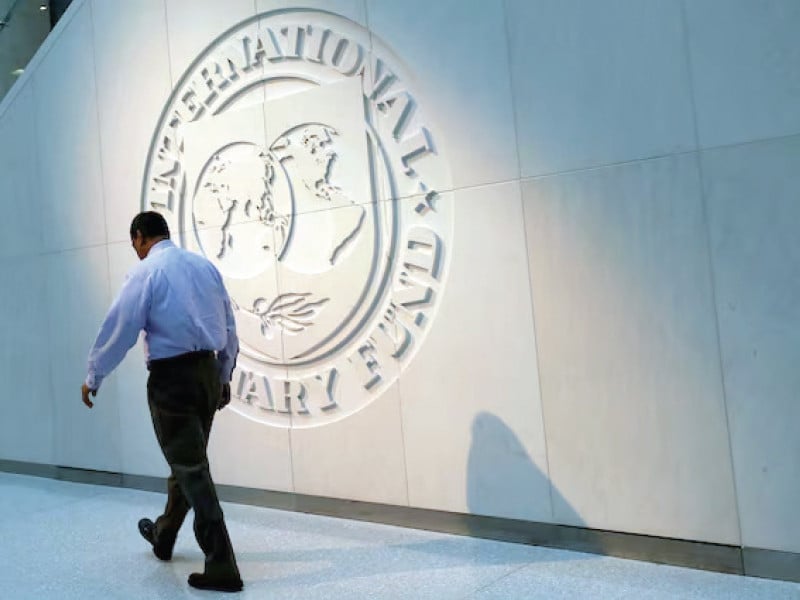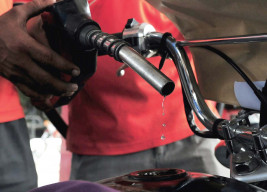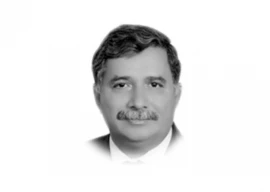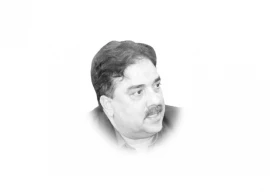
As Pakistan seeks a multibillion-dollar bailout from the International Monetary Fund (IMF) to stabilise its chronically ailing economy, the global lender has suggested imposition of a standard individual income tax rate of up to 45% on agriculture income – something that may end the disparity in income tax regime without the need to amend the Constitution.
The condition is part of the structural benchmarks the IMF has defined for the next bailout programme that Pakistan is negotiating with the global lender, according to sources in the Ministry of Finance.
Subject to signing of the new agreement, the sources said that the global lender has set the October 2024 deadline to amend the existing provincial laws to bring them at par with the federal income tax law. The IMF has also asked for rescinding any income tax exemption for the livestock sector by October this year.
Under the Constitution, the federal government cannot impose taxes on agricultural income. The provinces are authorised to collect taxes from the agriculture sector that contributes 24% in the economy but does not contribute even 0.1% of the total taxes collected from across the country.
The IMF has not touched the constitutional arrangement but instead has asked the provinces to simply adopt the income tax rates of non-salaried business individuals that are as high as 45% of net income.
Before the budget, the salaried income tax rate was 35% on the monthly gross income of over Rs500,000, which after the budget is 35% on the monthly income of Rs341,000 and 39% on the monthly income of Rs833,000. For the non-salaried individual, the new rate is 45% of the net income and after adding surcharge it is 50%. The IMF has placed a condition to adopt the standard 45% individual income tax rate for agricultural income too.
In its recent series of reports, the World Bank has estimated that Pakistan can farm income tax equal to 1% of the Gross Domestic Product. This at today’s projected size of the economy is equal to Rs1.22 trillion.
The sources said that provincial governments have by and large given consent to the IMF’s demand. They said that the IMF team also held a meeting with the representatives of the Sindh government on Tuesday. During these meetings, the Sindh government’s view was that the 35% to 45% income tax rate for the agriculture sector was too high compared to the existing 15% maximum rate.
When the IMF started negotiations with the provincial governments, the maximum individual income tax rate was 35%, which the federal government has already increased to 45% from July.
The sources said that under the IMF condition, the four provinces will have to amend their agriculture income tax regimes to fully align those with the federal personal income rates. They said that according to the condition in case of the corporate farming, the rate of corporate income tax rate would apply.
The IMF has also set a condition that the provincial governments end the current income tax exemption available on livestock income by the end of October.
As per the IMF’s demand, each province would start collecting up to 45% agriculture income tax by January 2025. In case, any provincial government is not capable of collecting the revised tax, it would authorise the Federal Board of Revenue to collect the tax from farmers and landlords until the federating units develop a mechanism to collect these taxes.
The sources said that the Punjab government has already given its consent to the new income tax regime for the agriculture sector. They said that the Sindh government had issues with the higher rates but it might eventually acquiesce.
At present, the provinces have different income tax rates for the agriculture sector. Compared to the national income tax exemption threshold of Rs600,000, in Sindh, up to Rs1.2 million annual agriculture income is exempt from tax. From Rs1.2 million to Rs2.4 million, the rate is 5%, on up to Rs4.8 million the rate is 10% and on over Rs4.8 million annual incomes, the rate is 15%.
A salaried person is now forced to pay 35% income tax rate on annual gross income of Rs4.1 million. The salaried class has been victimised by the government of Prime Minister Shehbaz Sharif for having no voice and no power to resort to street agitation.
Speaking at a seminar on Tuesday in Lahore, President Asif Ali Zardari said the federal government was planning to tax agricultural income under the IMF condition. The president said that the provincial governments would be leading the initiative to tax large landholding farmers in accordance with their profitability and expenditures.
In Sindh, there is also Rs200 per acre for irrigated land and Rs100 per acre for non-irrigated land advance income tax. But up to 16 acres of irrigated and 32 acres of non-irrigated land is exempted from this tax.
Prime Minister Shehbaz Sharif has set the July-end deadline for his finance minister to finalise the staff level agreement with the IMF. The Finance Ministry on Tuesday could not give a firm date to the Standard and Poor’s credit rating agency for the IMF deal. The S&P, which has given a junk rating to Pakistan, had a meeting with the finance minister but it also did not give a timeline to improve the rating.
The sources said that the IMF was of the view that the new tax rates would bring an end to a disparity in income tax regime as income from agriculture will be taxed in the same way as other income.
In Khyber-Pakhtunkhwa where agriculture is not the main source of income for the majority, up to one acre of land is exempted from income tax. K-P’s maximum income tax rate is 17.5% or Rs15,000 per annum, whichever is higher.
In Punjab, on up to Rs1.2 million annual agriculture income, the rate is just Rs2,000 per annum. From Rs1.2 million to Rs2.4 million, the income tax rate is 5%, from Rs2.4 million to Rs4.8 million, the rate is 10% and on over Rs4.8 million annual incomes the current rate is 15%.
The sources said that the IMF was also asking to expand the GST on services list in the provinces by ending the current exempted goods. It has given one year time to the provincial governments to bring an end to these exemptions. The purpose is said to be enhancing transparency and reducing loopholes by ensuring that all items are subject to taxation.
The IMF had also demanded levy of 18% sales tax on fertilizer and pesticides but the federal government successfully protected farmers. However, the PM did not care about the salaried class and slapped it with an income tax rate that is only applicable in Scandinavian countries where the state provides every service to its citizens.
























COMMENTS
Comments are moderated and generally will be posted if they are on-topic and not abusive.
For more information, please see our Comments FAQ